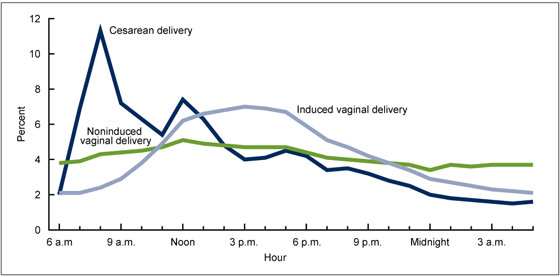Most American Babies are Born in the Morning
Medical interventions may determine time of birth, says new study
/https://tf-cmsv2-smithsonianmag-media.s3.amazonaws.com/filer/ca/75/ca7518f8-018e-496a-bd8b-515900903719/42-68705559.jpg)
If you were born in the United States in 2013, chances are you were an early bird. (Also, if you're reading this and you were born in 2013, changes are you are a baby genius.) According to new data from the Centers for Disease Control, most American babies born during the week in 2013 were born in the morning and midday hours.
This data suggests that medical interventions may be used to schedule births so they occur during prime working hours for hospital staff, writes Arielle Duhaime-Ross for The Verge. About a third of all births in the United States are caesarians and doctors tend to schedule those during the work day.
The regularity of these timings reflects the typical workday structure of many hospitals. If deliveries were spread equally throughout the day, about 4.2% of babies would be born every hour, according to the CDC’s report. However, the researchers found that the percentage was higher during weekday work hours. At the same time, the number of newborns delivered on weekdays regularly spiked twice every day, at 8 a.m. and at noon. Weekend births, on the other hand, were more spaced out at more regular intervals.

The study also found that the method of delivery can influence the time of day a baby is born. 93.9 million babies were born in 2013, almost all of them were delivered in a hospital. The study’s authors broke down each birth into one of four categories: non-induced vaginal births, induced vaginal births, unplanned cesareans, and planned cesareans.
Most planned caesarians took place during the day, while non-induced vaginal births were much more likely to occur in the early morning or at night, according to the study. Similarly, most unplanned caesarians happened at night. The percentage of induced vaginal births gradually increased as the day went on until peaking around 3 p.m.

By knowing the time different types of births are likely to happen can help hospitals allocate resources to help make sure that the newborns and their mothers receive the best care, writes Alexandra Sifferlin for Time. While the data comes close to covering most of the country (according to the study it represented 90% of all births in 2013), time-of-birth data will be available for the entire country next year.